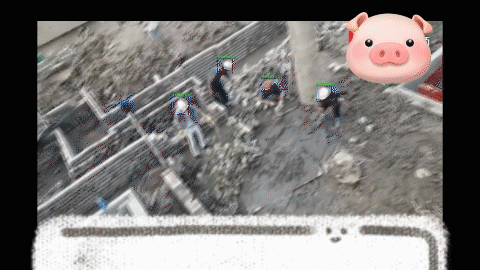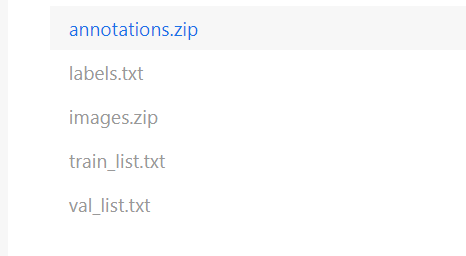A Python implementation of Yolov5 to detect head or helmet in the wild in Jetson Xavier nx and Jetson nano. In Jetson Xavier Nx, it can achieve 33 FPS.
You can see video play in BILIBILI, or YOUTUBE.
if you have problem in this project, you can see this artical.
If you want to try to train your own model, you can see yolov5-helmet-detection-python. Follow the readme to get your own model.
You can get the dataset from this aistudio url. And the head & helmet detect project pdpd version can be found in this url. It is an amazing project.
This pro needs dataset like
../datasets/coco128/images/im0.jpg #image
../datasets/coco128/labels/im0.txt #label
Download the dataset and unzip it.
unzip annnotations.zip
unzip images.zipYou can get this.
├── dataset
├── annotations
│ ├── fire_000001.xml
│ ├── fire_000002.xml
│ ├── fire_000003.xml
│ | ...
├── images
│ ├── fire_000001.jpg
│ ├── fire_000003.jpg
│ ├── fire_000003.jpg
│ | ...
├── label_list.txt
├── train.txt
└── valid.txt
You should turn xml files to txt files. You also can see this.
Open script/sw2yolo.py, Change save_path to your own save path,root as your data path, and list_file as val_list.txt and train_list.txt path.
list_file = "./val_list.txt"
xmls_path,imgs_path = get_file_path(list_file)
# 将train_list中的xml 转成 txt, img放到img中
save_path = './data/yolodata/fire/cocolike/val/'
root = "./data/yolodata/fire/"
train_img_root = root Then you need script/yolov5-split-label-img.py to split img and txt file.
mkdir images
mkdir lables
mv ./train/images/* ./images/train
mv ./train/labels/* ./labels/train
mv ./val/iamges/* ./images/val
mv ./val/lables/* ./lables/valFinally You can get this.
├── cocolike
├── lables
│ ├── val
│ ├── fire_000001.xml
| ├── ...
│ ├── train
│ ├── fire_000002.xml
| ├── ...
│
├── images
│ ├── val
│ ├── fire_000001.jpg
| ├── ...
│ ├── train
│ ├── fire_000003.jpg
| ├── ...
├── label_list.txt
├── train.txt
└── valid.txt
{porject}/yolov5/data/ add your own yaml files like helmet.yaml.
# YOLOv5 🚀 by Ultralytics, GPL-3.0 license
# COCO128 dataset https://www.kaggle.com/ultralytics/coco128 (first 128 images from COCO train2017)
# Example usage: python train.py --data coco128.yaml
# parent
# ├── yolov5
# └── datasets
# └── coco128 downloads here
# Train/val/test sets as 1) dir: path/to/imgs, 2) file: path/to/imgs.txt, or 3) list: [path/to/imgs1, path/to/imgs2, ..]
path: /home/data/tbw_data/face-dataset/yolodata/helmet/cocolike/ # dataset root dir
train: images/train # train images (relative to 'path') 128 images
val: images/val # val images (relative to 'path') 128 images
test: # test images (optional)
# Classes
nc: 2 # number of classes
names: ['head','helmet'] # class namesChange {project}/train.py's data path as your own data yaml path.
 Change
Change batch-size as a suitable num. Change device if you have 2 or more gpu devices.
Then
python train.pyUse detect.py to test.
python detect.py --source ./data/yolodata/helmet/cocolike/images --weights ./runs/train/exp/weights/best.ptYou can see {project}/runs/detect/ has png results.


